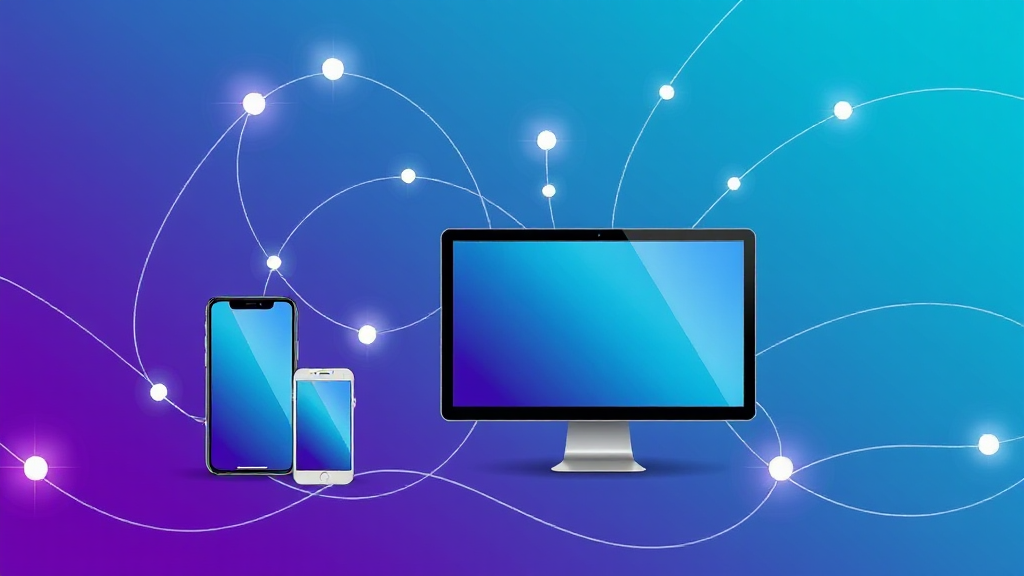The Evolution and Future of AI in Website Design & Development

For a deeper dive, see our
.
This dynamic illustration highlights the seamless adaptability of responsive web design, showcasing how websites fluidly adjust to different screen sizes—smartphone, tablet, and desktop—thanks to cutting-edge AI integration.
Introduction
The digital landscape is evolving at an unprecedented pace, driven by advancements in artificial intelligence (AI) and machine learning. These technologies have revolutionized various industries, and website design and development are no exceptions. From automating repetitive tasks to delivering personalized user experiences, AI is reshaping how websites are built and optimized. In this article, we’ll explore the evolution of AI in website design and development, its current applications, and its future potential.
Understanding AI in Web Design & Development
The Role of AI in Modern Website Creation
AI plays a pivotal role in modern web design by automating tasks that were once performed manually. This includes everything from generating wireframes and designing layouts to optimizing code for faster loading times. By leveraging machine learning algorithms, AI tools can analyze user behavior patterns and create websites tailored to specific audience preferences.
Key AI Tools in Website Development
Several AI-powered tools are transforming the way websites are developed:
- AI-Driven Design Platforms
These platforms use machine learning to suggest design elements based on trends and user data. They can automatically generate layout options, color schemes, and typography that align with the target audience’s preferences.
Code Optimization Tools
AI tools analyze code and identify areas for improvement, such as reducing file sizes or simplifying complex scripts. This leads to faster-loading websites, which are crucial for user satisfaction and search engine rankings.
Personalization Engines
AI enables website personalization by analyzing user data in real time. These engines can dynamically adjust content, images, and navigation based on individual preferences, delivering a highly tailored experience.
Benefits of Integrating AI in Website Development
Enhanced Efficiency
AI streamlines the development process by automating repetitive tasks. This allows developers to focus on more complex aspects of website creation, such as backend integration and performance optimization.
Improved User Experience
By analyzing user behavior, AI helps create websites that are intuitive and easy to navigate. Personalized content recommendations, dynamic loading priorities, and adaptive design elements all contribute to a better user experience.
Cost-Effective Solutions
AI tools reduce the need for extensive manual labor, making website development more cost-effective. Additionally, automated optimization ensures that websites perform well without additional human intervention.
Challenges in AI-Driven Website Development
Despite its benefits, AI in web design and development presents several challenges:
Data Dependency
AI algorithms rely heavily on data to function effectively. Insufficient or poor-quality data can lead to inaccurate predictions and suboptimal designs.
Ethical Considerations
The use of AI in web design raises ethical questions, particularly regarding user privacy and algorithmic bias. Developers must ensure that AI tools are used responsibly and ethically.
The Future of AI in Website Design & Development
Emerging Trends
- Generative AI for Content Creation
Generative AI models, such as GPT-4, are increasingly being used to create content, including text, images, and even code. This could significantly accelerate the development process.
Multimodal Interfaces
The future of web design may involve multimodal interfaces that combine different types of media—such as text, images, and videos—in ways that adapt dynamically based on user interactions.
Sustainability Focus
AI tools will play a key role in creating more sustainable websites by optimizing resource usage and reducing carbon footprints through efficient coding practices.
Conclusion
Ready to take the next step?
.
The integration of AI into website design and development is no longer a luxury but a necessity. As technology continues to advance, the potential for AI to transform the industry grows exponentially. By embracing these advancements while addressing the associated challenges, businesses can create websites that are not only functional but also highly engaging and user-centric.
CTA Section
Looking to leverage the power of AI in your website design and development? Partner with EifaSoft, a leader in AI Development and Robotic Programming Services. Contact us today to explore how we can help you create tomorrow’s web experiences!
Related Articles
Why EifaSoft Stands Out in MLM Software Development: A Comprehensive Guide
Discover what sets EifaSoft apart in MLM software development. Get a comprehensive guide to the latest innovations, including AI-driven insights and dynamic dat
Why Custom MLM Software Development is Critical for Modern Businesses
Discover why custom MLM software development is crucial for modern businesses. Learn how advanced blockchain technology provides a secure shield for your multi-
Why Choosing the Right MLM Software Development Company is Crucial for Your Business Success
Here is a concise and compelling SEO meta description for your blog post: Discover why choosing the right MLM software development company is crucial to your b